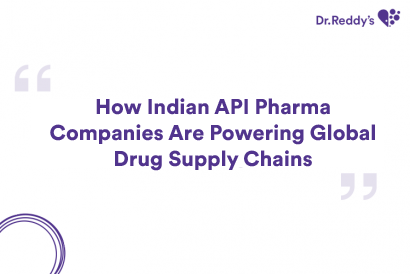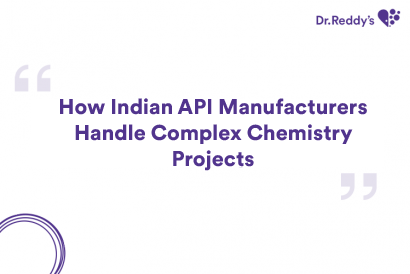Effective Formulation Development Strategies for Poorly Soluble Active Pharmaceutical Ingredients (APIs)
Formulating poorly soluble Active Pharmaceutical Ingredients (APIs) poses a significant challenge in the pharmaceutical industry. Enhancing the solubility and bioavailability of such compounds is crucial for improving drug efficacy.
Here are some effective formulation development strategies for poorly soluble APIs:
Understanding Venetoclax and Its API
Venetoclax is an oral medication developed to target B-cell lymphoma-2 (BCL-2) proteins that promote cancer cell survival in CLL. The API in Venetoclax is the active compound responsible for its pharmacological effects, disrupting BCL-2 proteins and inducing apoptosis in malignant lymphocytes.
Particle Size Reduction:
Micronisation: Reduce particle size to increase the surface area and improve dissolution rates. Micronisation techniques like milling, jet, or ball milling can be employed.
Nanosuspensions: Formulate nanoparticles to enhance dissolution. Nanosuspensions can be prepared using techniques like high-pressure homogenization or milling.
Solid Dispersions:
Polymer-based Systems: Use polymers to disperse the API at a molecular level. Solid dispersion techniques include hot-melt extrusion, spray drying, and solvent evaporation.
Amorphous Forms: Convert the crystalline API into its amorphous form to enhance solubility. However, care must be taken to prevent re-crystallization during storage.
Lipid-Based Formulations:
Lipid Nanoparticles: Formulate the API in lipid-based carriers like Nano-emulsions, liposomes, or lipid nanoparticles to improve solubility and bioavailability.
Self-emulsifying Drug Delivery Systems (SEDDS): Use surfactant and co-solvent systems to enhance solubility and absorption in the gastrointestinal tract.
pH Adjustment:
Salt Formation: Convert the API into its salt form to improve solubility. Choose a counterion that enhances solubility without negatively affecting stability.
pH Modification: Adjust the pH of the formulation to a level where the API exists in a more soluble form. However, consider the stability of the API at different pH levels.
Co-Crystal Formation:
Co-Crystallization: Formulate the API with a co-crystal former to improve solubility. This strategy involves the creation of a new crystal lattice structure.
Complexation:
Cyclodextrin Complexation: Use cyclodextrins to form inclusion complexes with the API, enhancing solubility and stability.
Polymer Complexation: Formulate the API with polymers that can form complexes, improving solubility through increased dispersion.
Inclusion of Surfactants:
Micellar Solubilization: Incorporate surfactants to form micelles, improving the solubility of the API in the aqueous environment.
Continuous Manufacturing:
Hot Melt Extrusion (HME): Utilize continuous manufacturing techniques like HME to produce solid dispersions, ensuring consistent quality and reduced processing times.
Quality by Design (QbD) Approach:
Risk Assessment: Employ QbD principles to identify and mitigate risks early in the formulation development process.
Design of Experiments (DOE): Use statistical tools like DOE to optimise formulation parameters and identify critical factors influencing solubility.
In vitro and In vivo Testing:
Biorelevant Dissolution Testing: Mimic physiological conditions during dissolution testing to better predict in vivo performance.
Pharmacokinetic Studies: Conduct in vivo studies to assess the bioavailability and efficacy of the formulated drug.
Formulating poorly soluble APIs requires a multidisciplinary approach, and a combination of these strategies may be necessary to achieve the desired solubility enhancement and therapeutic efficacy. Additionally, regulatory considerations and stability testing should be integral to the formulation development.
In formulating poorly soluble Active Pharmaceutical Ingredients (APIs), a comprehensive strategy can be developed by integrating effective techniques and drawing inspiration from Dr. Reddy's Laboratories. Implementing particle size reduction methods such as micronisation or nanosuspensions, alongside solid dispersion approaches like hot-melt extrusion or spray drying, can enhance solubility. Incorporating Dr. Reddy's integrated drug development approach fosters collaboration between API synthesis and formulation teams. Utilising the company's expertise in handling Highly Potent APIs (HPAPIs) is crucial for compounds with both low solubility and high potency.
Continuous processing techniques should be explored for improved efficiency. Ensuring global regulatory compliance, aligning with Dr. Reddy's commitment to quality, and integrating analytical method development for robust testing are vital.
Combining the effective formulation strategies mentioned earlier with Dr. Reddy's specific capabilities and approaches, you can create a comprehensive and tailored plan for developing formulations for poorly soluble APIs that align with scientific excellence and industry standards.
- Call us:
 +91 40 49002253
+91 40 49002253
Contact Us
次のフォームに記入してください。すぐにご連絡いたします.





